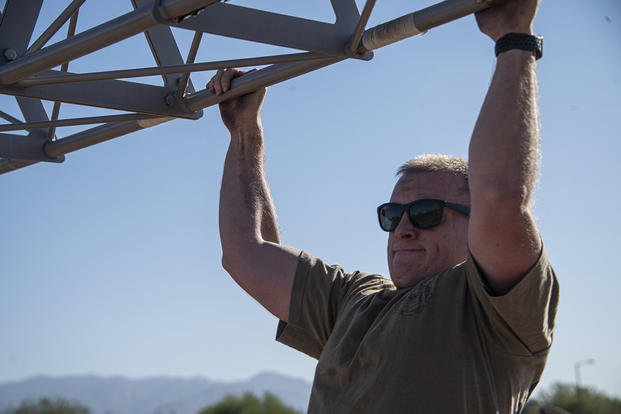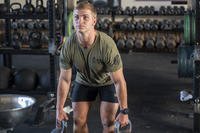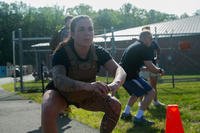Whether you are preparing for military basic training, advanced training or just want to get into shape without using much equipment, you can achieve those goals by practicing and mastering body-weight exercises. There are many variations of the following list of calisthenics exercises that can assist your fitness on either side of the spectrum (beginner or advanced).
The following is a list of some of the most basic exercises that you should practice if you want to perform well at any military training program. Arranging these into a daily routine can vary as well. Some like to do all of the following in one workout, while others will split the upper body and lower body and do them on separate days (split routine). You can do a number of repetitions that fit your fitness level, or set a timer and do each exercise for 1-2 minutes in a challenging circuit.
Note: There are a few pictures of these exercises to save space for this article. Video links are available if you need assistance with technique or understanding what they are.
Push and Pull Section
Regular Push-ups: The push-up is a military, police, firefighter, sports and general fitness classic. Mastering this exercise not only builds your chest, shoulders, and arms, but also strengthens your upper back, lower back, hip and thigh muscles. Variations to make push-ups harder can be as simple as adding a weight vest or elevating the feet. To make them easier, do the knee pushup version. The push-up is about 50%-60% of your body weight in terms of how much you are lifting when you perform them.
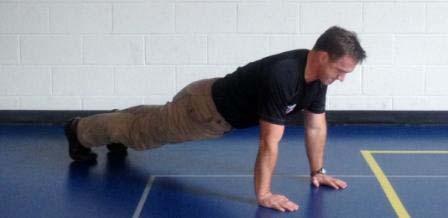 |
Parallel Bar Dips: The dip is considered the heavyweight exercise in pushing calisthenics. You have to lift all of your body weight up and let it down on parallel bars. Some athletes will make dips more difficult by adding weight (belt or vest), and some make them easier with the bench dip where you leave your feet on the floor and vertically push off the seat behind you.
Burpees: The burpee is considered a more advanced, full-body version of the push-up. It works the legs, core, upper body, and after many repetitions, it challenges the heart and lungs, too. These are hard enough on their own, but many have found a way to make them tougher by adding pull-ups, box jumps or a forward jump. There is no easy burpee until you are conditioned to do them, and even then, they are not easy.
Bear Crawls: This is another more advanced full-body version of a push exercise. You could call it more of a dynamic plank pose, versus the isometric hold of the plank or up push-up position. Adding motion to this position works the arms, shoulders, core, hips, legs and lungs after walking like a bear for a 50- to 100-yard distance.
Pull Section
Pull-ups (regular grip): The pull-up is a heavyweight exercise in the calisthenics world. There are many grips you can use to create a variety of challenges when doing multiple sets, as well as easier versions if you are striving to get your first pull-up. This exercise works the upper back, rear deltoids, biceps and forearms (grip). Most people cannot do pull-ups. To build up to accomplishing pull-ups, try assisted pull-ups, pulldowns and negatives to get your muscles used to pulling your body weight.
Upper-Back Exercise/Reverse Push-ups: The reverse push-up is a pulling exercise designed to help balance out all the pushing that a life in military training requires. This will strengthen your upper-back muscles that oppose the chest muscles and stretch the chest and front shoulders.
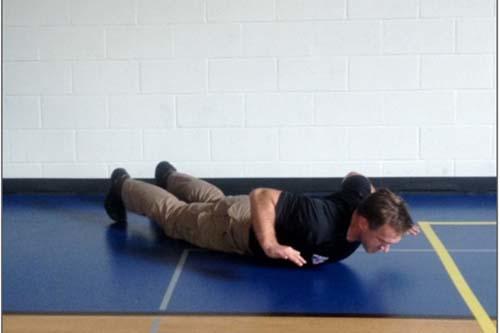 |
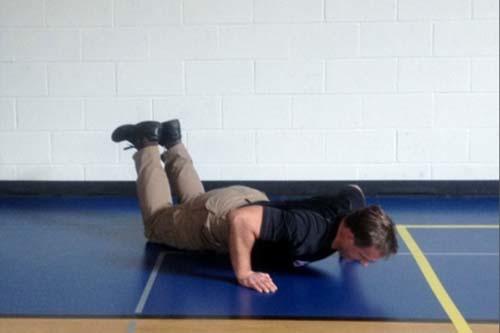 |
Core Section
This section is the most important out of all the body parts. You cannot have strong arms or legs without a strong core (back, abdominals, hips and shoulder girdle).
Sit-ups: The sit-up has come under fire by many in the medical and science community as an ineffective way to measure core strength. But until it changes, you still need to practice sit-ups. If you do them, you also need to balance them out and strengthen the upper and lower back with the following exercises. I prefer the two-minute plank test, but if we test sit-ups, you have to practice sit-ups and the following to help balance your core.
Lower-Back Exercise -- Swimmers: The Swimmer is a full backside exercise requiring you to flex fully and move slightly as if you are swimming (flutter-kicking your legs as in a freestyle stroke). This is an isometric flex of the lower and upper back and a slight movement of the hip and leg muscles in a flexed position.
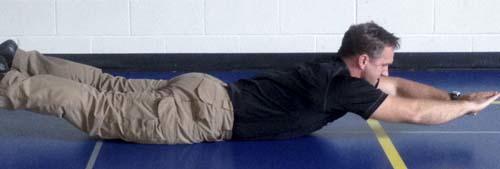 |
Plank Pose and Side Plank: The plank, and many variations, is a classic core exercise. The plank is arguably the safest and best axial spine (core) exercise you can do as it works the abdominal muscles, back muscles, shoulder girdle and hips. You have to engage all of these groups together in order to perform the plank and its variations successfully. Build up to 1-2 or more minutes.
Flutter kicks: The flutter-kick exercise is another challenging favorite of the military. Adding wet pants and boots make them more difficult. This is considered an advanced core exercise, so build up to adding them to your workout once you are able to perform 1-2 minutes of a plank pose. To be safe, place your hands under your hips (this eases the strain on your lower back). This works the hips, lower abs and thighs.
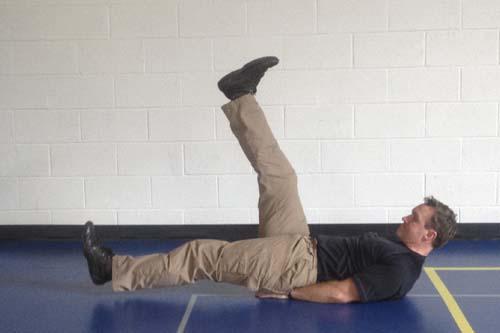 |
Lower Body Section
Squats: Whether working with weighted squats or higher-repetition muscle stamina squats, the squat is a must-do exercise that ranks up there with the push-up. Learning proper form will help you increase your hip, knee and ankle mobility, core strength and serve as the foundation of movement you need in life. If I could do only one exercise, this one would be it. Yes, it is that important not to skip leg day.
Dirty Dogs: The Dirty Dog is a nickname for a side leg lift that works the glute muscles, specifically the gluteus medius, which can help balance the hip, iliotibial band and thigh connections. Focusing on good form, try working up to three sets of 30, lifting the knee and leg out to the side 90 degrees. (From Special Ops Running Book, the injury prevention section.)
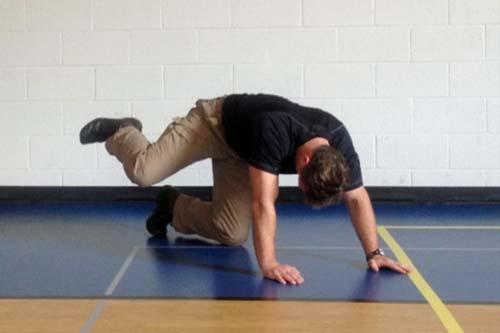 |
There are hundreds of body-weight exercises you can do to improve your fitness at no cost other than time. I feel these particular exercises have been extremely beneficial to my training and longevity, whether going through challenging high-repetition cycles or moderate maintenance cycles. These dozen exercises have been my staple for two decades now.
Stew Smith is a former Navy SEAL and fitness author certified as a Strength and Conditioning Specialist (CSCS) with the National Strength and Conditioning Association. Visit his Fitness eBook store if you’re looking to start a workout program to create a healthy lifestyle. Send your fitness questions to stew@stewsmith.com.
Want to Learn More About Military Life?
Whether you're thinking of joining the military, looking for fitness and basic training tips, or keeping up with military life and benefits, Military.com has you covered. Subscribe to Military.com to have military news, updates and resources delivered directly to your inbox.
